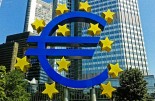Aegon AM: ECB’s new forward guidance leaves room for interpretation
Aegon AM: ECB’s new forward guidance leaves room for interpretation

Post-ECB meeting commentary fromRuari van Veen, Fixed Income Portfolio Manager at Aegon Asset Management
The European Central Bank revised its monetary policy yesterday by incorporating a new strategy that targets a symmetric inflation level of 2% over the medium term. Under this framework inflation rising moderately in the short term would not lead to immediate action.
Previously, the inflation goal of the ECB was a target of “close to, but below 2%”, which in contrast to the new strategy did not explicitly allow for overshooting. The change in strategy seems to have been being spurred on by the possibility of eurozone inflation temporarily rising.
The ECB changed its forward guidance and expects interest rates to remain at current or lower levels until inflation stabilizes at 2% within the 3-year projection period and remains there until the end of the period. In addition to looking at forecasted inflation, the guidance also states that realized inflation must consistently move in the direction of the target as well.
Given that the ECB projects eurozone inflation to be 1.5% in 2022 and 1.4% in 2023, there does not seem to be a lot of room currently to tighten monetary policy, even if short term inflation would rise above 2%. This new guidance therefore seems more dovish and more committed to increase inflation through monetary stimulus than the previous one.
Not Unanimous
The decision made yesterday by the Governing Council to change forward guidance was not unanimous. The Belgian and German Governors Pierre Wunsch and Jens Weidmann opposed the change and were concerned it would signal that the ECB is making a long-term commitment to keep interest rates low. Other officials also seemed to share these concerns and agreed to the change in guidance under the condition that it would only apply to policy rates and not to asset purchasing programs.
Mostly Unchanged
Other than amending the forward guidance, there were surprisingly little changes made by the ECB. The three key interest rates set by the ECB to facilitate liquidity and guide interbank lending were left unchanged: the main financing rate, the marginal lending facility rate and the deposit rate were left at their current levels of 0.00%, 0.25% and -0.50%, respectively.
More importantly, the ECB did not announce any changes to their asset purchasing programs: neither the Pandemic Emergency Purchase Programme (PEPP, which will expire at the end of March 2022), nor the asset purchasing programme (APP) saw a change in pace of asset purchasing, and that decision seems to have been pushed back to later this year. This makes the next September meeting an important point of reference, when the pace of asset purchasing will begin to decrease as PEPP starts to deplete.
Market Reaction
After the publication of the updated monetary policy, the initial reaction by government bond markets was bullish. The strategy of a symmetrical inflation target of 2% was already known and priced-in, however the new guidance was seen as supportive for bond markets. The yield on 10-year German government bonds dropped by 3 basis point to -0.43% and spreads between European core and periphery countries tightened. The 3-month EURIBOR futures curve flattened as rate hikes were repriced to later maturities, signalling the market expects policy rates to remain low for longer.
Our Interpretation
The main takeaway from July’s meeting is that the ECB is not concerned with high inflation even as economies slowly reopen, savers turn into consumers and the demand gap turns into a supply shortage. Instead it seems more worried with the possibility of hiking rates too early.
The new forward guidance gives the ECB a lot of room for interpretation. As long as their forecasted inflation continues to remain below 2%, we can certainly expect that policy rates will remain at their current low levels. This also tells us that either PEPP or APP will likely be expanded in some form in order to support the move of inflation towards the target of 2%.
We interpret that the reinforced accommodative stance of the ECB favours yields to remain around lower levels, which would support further government debt issuance. However, with a strong ongoing economic recovery and the future of the purchasing programs still unclear, markets are now more vulnerable than ever to any suggestion of tapering.








